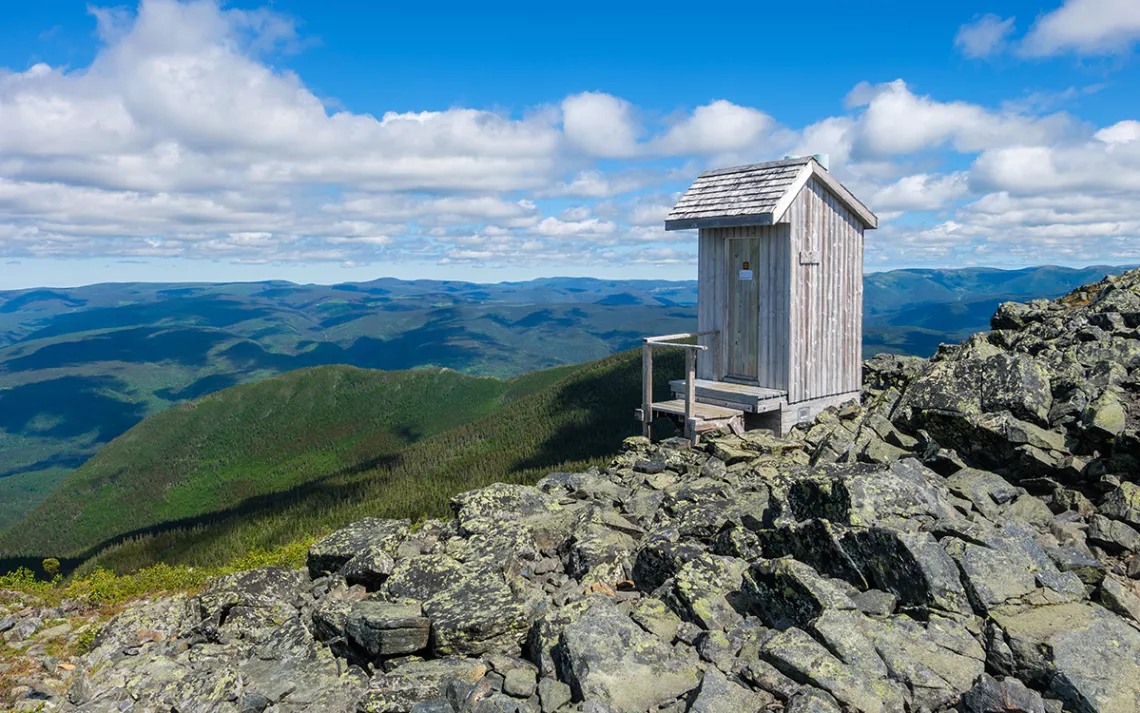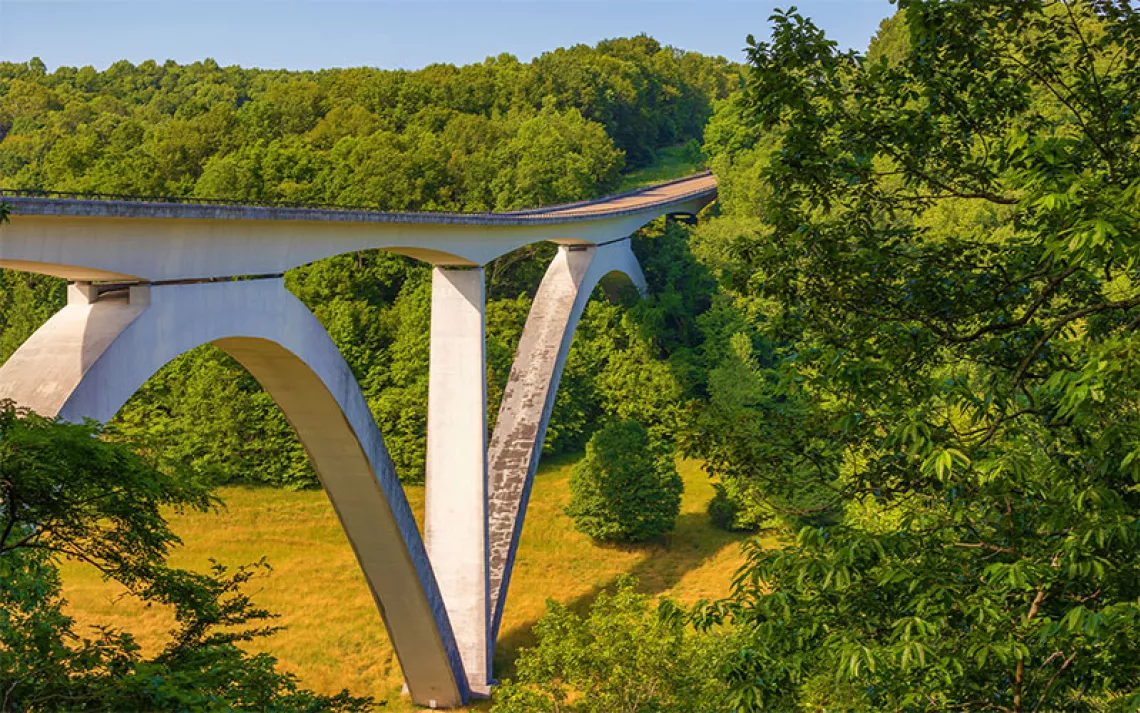When Nature Calls in the Backcountry, It’s a Problem for Parks
Employees grapple with the volume of human waste in the outdoors

Photo by edolzan/iStock
For one day each September in Washington State’s Olympic National Park, if you see a helicopter overhead, it’s probably not retrieving an injured hiker. Most likely, the chopper is carrying barrels full of excrement.
Like many parks, Olympic National Park has struggled to manage ever-increasing numbers of visitors—the national park system as a whole saw 313 million visitors in 2018, up from 281 million in 2010—as well as what those visitors leave behind. Managing the increasing volume of human waste in the backcountry, far from plumbing and flush toilets, is a particular challenge. “I think it's one of the biggest issues . . . right now in the park,” says Larry Lack, trail program manager at Olympic.
Often, backcountry visitors are left to find their own spots to squat, but “especially in the high country . . . it's a really fragile plant community. [When] people are wandering all over trying to find a place to go, they're causing damage that can take decades to heal,” Lack says.
Pit toilets—large holes in the ground covered by a wooden “throne”—are the most common, low-maintenance answer to this problem, but on Olympic National Park’s coast, privy spots come at a premium. The beaches here are part of the largest wild coastline in the contiguous US, and many contain important Indigenous archaeological sites. The popularity of some areas requires new holes every two or three years. “We can't keep digging holes as fast as they fill up,” says Lack. On top of that, it’s unclear how long it takes, once buried, for the contents of these holes to decompose—an old Forest Service guide from 1995 suggests it can take years, even decades. Dave Conca, Olympic’s cultural resource program manager, says he wouldn’t want to set a shovel in the same place for at least half a century.
To alleviate the impact of pit toilets, Olympic has installed eight self-contained vault toilets at the most popular backcountry spots. While these toilets are convenient for visitors and help prevent damage to delicate park soils, they have their own maintenance issues. Personnel regularly hike 10, 18, or 30 miles and thousands of feet of elevation to clean the toilets, replace vaults, or ready them for removal.
What does it take to remove a vault full of human waste? The 35-gallon barrels, which weigh around 200 pounds, must be maneuvered by one or two park workers to hidden locations where visitors won’t see them. Later, they’ll have to be moved again—often hundreds of yards away—to a spot where a helicopter has enough clearance to fly them out.
But helicopters are expensive (Glacier National Park spends $20,000 a year just to empty the vaults from two remote chalets) and a safety risk. The fact that Olympic has managed to narrow down its helicopter flights for this purpose to a single day a year is a feat in itself. “It's one day of helicopter use but multiple days of prep time and getting ready and hiking time to stage,” Lack explains. People have to be ready at each backcountry site as well as on the ground near the pumper trucks to clean vaults. “It's a huge operation.”
Some parks have begun to explore alternatives to both pit and vault toilets. Tara Vessella, wilderness field coordinator at Rocky Mountain National Park, realized digging endless holes for pit toilets at popular backcountry campgrounds wasn’t going to work. “After the second or third time I dug a hole, I said we can’t do this anymore. This isn’t responsible use, and it isn’t sustainable.”
This led her to Geoff Hill, the founder and owner of Seattle-based Toilet Tech. Hill has a PhD in human waste management and saw the problem of backcountry toilets firsthand while researching for his thesis. He learned about a working design for a special kind of toilet in France and Switzerland, which he’s since imported and started selling.
The basic design for Toilet Tech privies is this: Rather than urine and feces combining into a single hole, gravity funnels the pee off to the side, just below ground. “We’re really trying to promote biomimicry,” he says. “Every mammal pees on the surface of the earth, and that’s the primary nitrogen and phosphorus nutrient for life in general.”
While urine runs off, poop collects on a conveyor belt. When the visitor is finished, they press a foot lever a handful of times and send the waste into a separate pile. (One park has taken to calling them “poopscalators.”) A second model takes it a step further, encouraging soil bugs to eat away at dung by carefully managing the pile and further reducing the amount of mass that has to be hauled out.
At Rocky Mountain National Park, park officials have installed seven of Hill’s toilets. Their first hasn’t been emptied for three years, and they don’t expect to empty it for another two. Since 2013, Hill has sold 230 toilets for both public and private uses. Zion National Park and Mount Rainier National Park have at least one installed, as do several of British Columbia’s provincial parks and Oregon’s Smith Rock State Park.
But these high-tech privies still have drawbacks. The toilets are expensive up front—Hill estimates the conveyor system on its own costs $4,100, and a complete system runs about $20,000—a lot of money for cash-strapped parks. While Rocky Mountain’s visitation numbers have grown by 42 percent since 2012, funding hasn’t kept pace. “Our budget, the way we describe it, it’s been flat or eroding over the last 10-plus years,” says the park’s public affairs officer, Kyle Patterson.
Regular maintenance is also necessary for the Toilet Tech designs, such as checking and clearing a urine filter, and despite plenty of signage, people still treat the toilets like, well, crap. In the first month the pee-less wonders were installed at Rocky Mountain National Park, someone dumped their Mountain House backpacking meal in the toilet, which froze and clogged one of the filters. More recently, someone poured hot ash in a toilet and melted some of its parts.
Even so, the toilets are making a difference for park employees. “They’ve made our life a lot easier,” Vessella says.
But clearly technology can’t be the only solution. In parts of Rocky Mountain National Park, particularly those heavily used by climbers, officials are requesting (but not requiring) that visitors use waste bags to pack out their own poop.
In other words, it’s worth trying to stretch the mantra of Leave No Trace to include backcountry facilities too. “It might be putting toilet paper in your pocket versus burying it,” Vessella says, or moving faster at the end of a hike when you know you’ve gotta go so you can hit a real commode. “That extra thought process of how your actions affect everyone else could really be a place to start.”
 The Magazine of The Sierra Club
The Magazine of The Sierra Club



